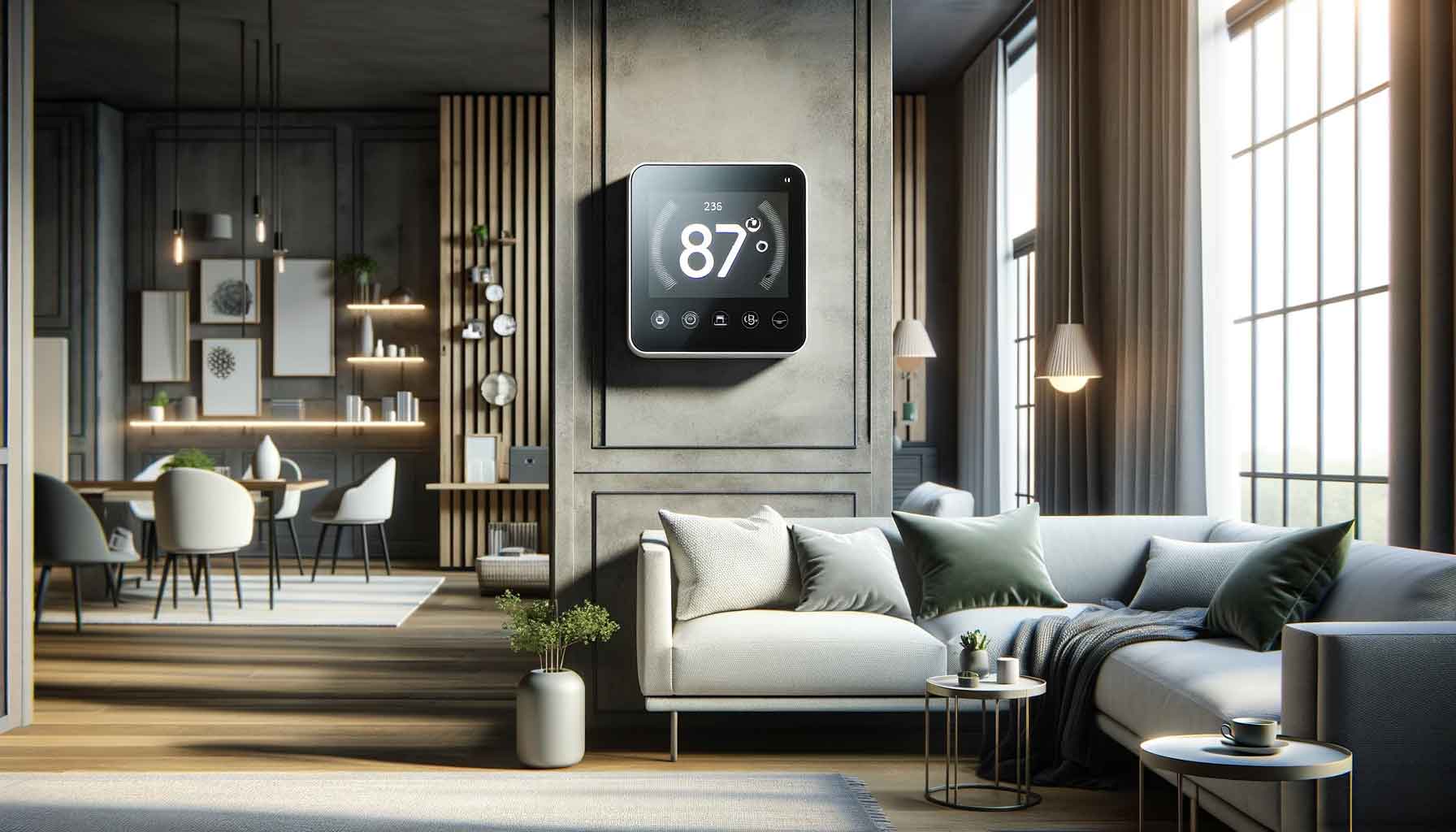In today’s world, smart home technology has revolutionized the way we manage our household activities. Among the most impactful advancements is the smart thermostat, which not only offers convenience but also promotes energy efficiency. If you’re looking to upgrade your home with the latest technology, you’ve come to the right place. In this article, we’ll explore the 10 best smart thermostats of 2024, their features, and how they can enhance your home’s comfort while saving you money on energy bills.
Table of Contents
Introduction to Smart Thermostats
Smart thermostats are modern devices that allow you to control your home’s heating and cooling systems through a smartphone, tablet, or computer. These thermostats use advanced algorithms and sensors to learn your schedule and preferences, adjusting the temperature automatically to provide optimal comfort while maximizing energy savings. As smart home technology continues to evolve, smart thermostats have become more sophisticated, offering a range of features designed to enhance your living experience.
Benefits of Using Smart Thermostats
Investing in a smart thermostat offers numerous benefits, making it a worthwhile addition to any home. Here are some key advantages:
Energy Efficiency: Smart thermostats are designed to optimize your home’s energy usage by learning your schedule and adjusting the temperature accordingly. This helps reduce energy waste and lower utility bills.
Convenience: With remote access via a smartphone app, you can control your thermostat from anywhere, ensuring your home is always at the perfect temperature when you arrive.
Customization: Smart thermostats offer various settings and modes, allowing you to customize your heating and cooling preferences to suit your lifestyle.
Integration with Other Smart Devices: Many smart thermostats are compatible with other smart home devices, such as voice assistants and security systems, providing a seamless and integrated smart home experience.
Environmental Impact: By reducing energy consumption, smart thermostats help decrease your carbon footprint, contributing to a more sustainable environment.
Key Features to Look for in Smart Thermostats
When choosing a smart thermostat, it’s important to consider the features that best meet your needs. Here are some essential features to look for:
Compatibility: Ensure the thermostat is compatible with your heating and cooling system. Most smart thermostats work with a variety of systems, but it’s always best to check before purchasing.
Remote Access: Look for a thermostat that offers remote access through a mobile app, allowing you to control the temperature from anywhere.
Learning Capabilities: Some smart thermostats can learn your schedule and preferences over time, automatically adjusting the temperature to provide optimal comfort and energy savings.
Energy Reports: Many smart thermostats provide detailed energy reports, helping you understand your energy usage and identify opportunities for savings.
Geofencing: This feature uses your smartphone’s location to determine when you’re home or away, adjusting the temperature accordingly to save energy.
Integration with Smart Home Systems: If you have other smart home devices, look for a thermostat that integrates seamlessly with them, allowing for voice control and automation.
Top 10 Best Smart Thermostats of 2024
Here are the top 10 best smart thermostats of 2024, selected based on their features, performance, and customer reviews:
Ecobee SmartThermostat with Voice Control

Features: Voice control with Amazon Alexa, remote sensor for managing hot and cold spots, energy reports, and integration with other smart home systems.
Pros: Easy to use, excellent energy-saving features, and seamless integration with smart home devices.
Cons: Higher price point compared to some competitors.
Nest Learning Thermostat (3rd Generation)

Features: Learning capabilities, remote access, energy reports, and compatibility with most HVAC systems.
Pros: Sleek design, intuitive interface, and significant energy savings.
Cons: Lacks some advanced features found in newer models.
Honeywell Home T9 Smart Thermostat

Features: Room sensors, remote access, energy reports, and geofencing.
Pros: Affordable, easy to install, and effective in managing temperature across multiple rooms.
Cons: Limited integration with some smart home systems.
Emerson Sensi Touch Wi-Fi Smart Thermostat

Features: Touchscreen display, remote access, compatibility with most HVAC systems, and integration with smart home devices.
Pros: Budget-friendly, user-friendly interface, and reliable performance.
Cons: Lacks learning capabilities found in more expensive models.
Google Nest Thermostat (2024 Model)

Features: Remote access, energy reports, geofencing, and compatibility with most HVAC systems.
Pros: Affordable, easy to install, and integrates well with other Google smart home products.
Cons: Limited learning capabilities compared to the Nest Learning Thermostat.
Wyze Thermostat

Features: Remote access, scheduling, and compatibility with most HVAC systems.
Pros: Very affordable, simple to use, and effective in maintaining consistent temperature.
Cons: Lacks some advanced features found in higher-end models.
Ecobee Lite SmartThermostat

Features: Remote access, energy reports, and integration with smart home systems.
Pros: Affordable, reliable performance, and energy-saving features.
Cons: Does not include room sensors found in the higher-end Ecobee model.
Lux Kono Smart Thermostat

Features: Customizable design, remote access, and compatibility with most HVAC systems.
Pros: Stylish design, user-friendly app, and effective in maintaining temperature.
Cons: Limited advanced features and integrations.
Honeywell Home T5+ Smart Thermostat

Features: Geofencing, remote access, and compatibility with most HVAC systems.
Pros: Affordable, easy to install, and effective in saving energy.
Cons: Lacks some advanced features found in higher-end models.
Johnson Controls GLAS Smart Thermostat

Features: Transparent OLED touchscreen, air quality monitoring, and integration with smart home systems.
Pros: Innovative design, excellent display, and air quality features.
Cons: Higher price point and limited compatibility with some HVAC systems.
How to Choose the Right Smart Thermostat for Your Home
Choosing the right smart thermostat depends on your specific needs and preferences. Here are some tips to help you make the best decision:
Assess Your HVAC System: Ensure the thermostat you choose is compatible with your existing heating and cooling system. Some thermostats may require a C-wire or other specific wiring setups.
Determine Your Budget: Smart thermostats come in a range of prices, so it’s important to set a budget before shopping. Keep in mind that higher-priced models often offer more advanced features.
Consider Your Home’s Layout: If you have a larger home or multiple rooms with varying temperatures, look for a thermostat with room sensors to ensure even temperature control throughout the house.
Evaluate Smart Home Integration: If you already have a smart home system in place, choose a thermostat that integrates seamlessly with your existing devices for a cohesive experience.
Look for Energy-Saving Features: To maximize energy savings, consider thermostats with learning capabilities, energy reports, and geofencing features.
Read Reviews: Customer reviews can provide valuable insights into the performance and reliability of different smart thermostats. Look for models with high ratings and positive feedback.
Installation and Maintenance Tips for Smart Thermostats
Installing a smart thermostat can be a straightforward process if you follow the instructions carefully. Here are some tips to ensure a smooth installation and proper maintenance:
Turn Off Power: Before starting the installation, turn off the power to your HVAC system to avoid any electrical hazards.
Follow the Instructions: Carefully read and follow the manufacturer’s installation instructions. Most smart thermostats come with step-by-step guides and videos to assist you.
Use the Right Tools: Ensure you have the necessary tools for installation, such as a screwdriver and wire stripper. Some thermostats may also require additional wiring, such as a C-wire adapter.
Connect to Wi-Fi: Once installed, connect your thermostat to your Wi-Fi network and download the corresponding app to access remote control features.
Regular Maintenance: Keep your thermostat clean and free of dust to ensure accurate temperature readings. Check for software updates regularly to ensure your thermostat is running the latest features and improvements.
Frequently Asked Questions about Smart Thermostats
Do smart thermostats save money?
Yes, smart thermostats can save money by optimizing your home’s energy usage and reducing unnecessary heating and cooling. Many users report significant savings on their utility bills.
Are smart thermostats difficult to install?
Installation difficulty varies by model, but most smart thermostats come with detailed instructions and tools to assist with the process. If you’re unsure, you can always hire a professional for installation.
Can I use a smart thermostat with any HVAC system?
Most smart thermostats are compatible with a wide range of HVAC systems, but it’s important to check compatibility before purchasing. Some systems may require additional wiring or adapters.
Do I need Wi-Fi to use a smart thermostat?
While Wi-Fi is not strictly necessary for basic thermostat functions, it is required to access remote control features, software updates, and energy reports.
How do smart thermostats learn my schedule?
Smart thermostats use sensors and algorithms to learn your schedule and preferences over time. By tracking when you’re home and away, they can adjust the temperature to provide optimal comfort and energy savings.
Conclusion
Investing in a smart thermostat is a smart decision for anyone looking to enhance their home’s comfort and energy efficiency. With a wide range of features and benefits, smart thermostats offer convenience, customization, and significant cost savings. By choosing the right smart thermostat for your needs, you can enjoy a more comfortable living environment while reducing your energy consumption and environmental impact. Explore our top picks for the best smart thermostats of 2024 and make the switch to smarter, more efficient home temperature control today.

